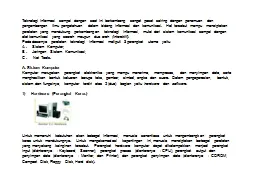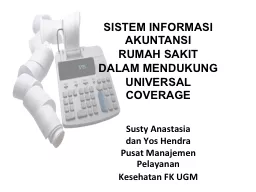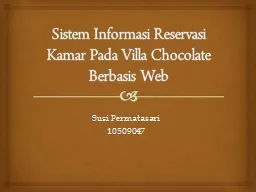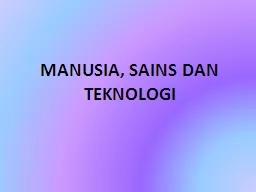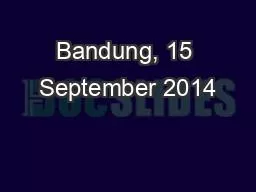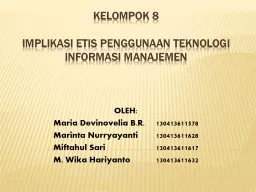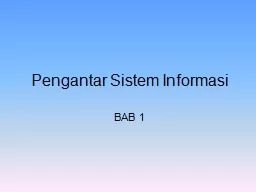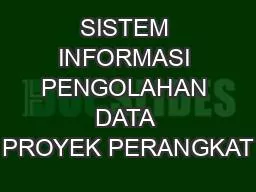PPT-Magister Teknologi Informasi
Author : neoiate | Published Date : 2020-08-28
Universitas Indonesia 2012 Data Mining More data is generated Bank telecom other business transactions Scientific Data astronomy biology etc Web text and ecommerce
Presentation Embed Code
Download Presentation
Download Presentation The PPT/PDF document "Magister Teknologi Informasi" is the property of its rightful owner. Permission is granted to download and print the materials on this website for personal, non-commercial use only, and to display it on your personal computer provided you do not modify the materials and that you retain all copyright notices contained in the materials. By downloading content from our website, you accept the terms of this agreement.
Magister Teknologi Informasi: Transcript
Download Rules Of Document
"Magister Teknologi Informasi"The content belongs to its owner. You may download and print it for personal use, without modification, and keep all copyright notices. By downloading, you agree to these terms.
Related Documents



